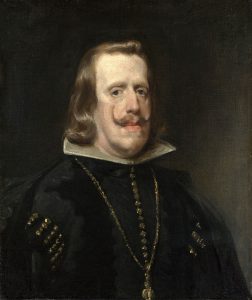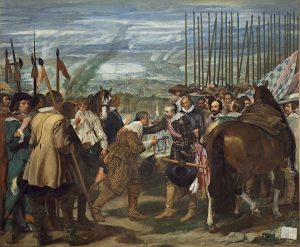Felipe IV of Spain
On 8 April 1605, the monarch Felipe Domingo de la Cruz y de Todos Santos, who was to reign as Felipe IV was born. This monarch has been diminished because of the great influence of his favourite, the Count-Duke of Olivares, the King’s mentor and true ruler until his fall from grace.
Philip IV was a slender young man of regal bearing, blond, with very fair skin and eyes, with a certain attractiveness, were it not for his pronounced jawline, which showed in all its splendour the proverbial prognathism of the Habsburgs. He had an interest in beauty, and also in women, and although he only acknowledged one natural son, Juan José de Austria, dozens were attributed to him. At his court, there was room for the most famous painters and the most talented poets. Corrupt, assiduous at parties and banquets, inebriated with wit, it was said that the court of Felipe IV that no other saw such a joyful loss of an empire.
Felipe IV’s politics were marked by that annus horribilis which was 1640 and which would divide his reign into at least two stages. The first began brilliantly, with military victories on all fronts, some as resounding as the surrender of Breda, immortalised by Velázquez. Spain defended its interests in Italy, supported the Austrian Habsburgs in Germany and bled on the eternal Dutch front, without losing sight of the defence of the colonies. Lurking in the background was France, with the sibylline Cardinal Richelieu ready to do the Empire in if he had the chance. Nordlinger was the turning point. The agonising victory of the Tercios, reflecting a fading greatness, forced France’s entry into the conflict. Richelieu saw that the Empire, though battered, was capable of resisting its rivals. Then the wind changed.
In 1637 Breda was lost, in 1638 France besieged Fuenterrabia, in 1639 the Armada sank in the Downs, and in 1640 the internal revolt broke out in Portugal and Catalonia, and both were lost, the former irreversibly. The Peace of Westphalia sealed the independence of Holland and buried the imperial idea, while the humiliating Peace of the Pyrenees consolidated a change in European leadership. Spain was no longer the hegemonic power.


